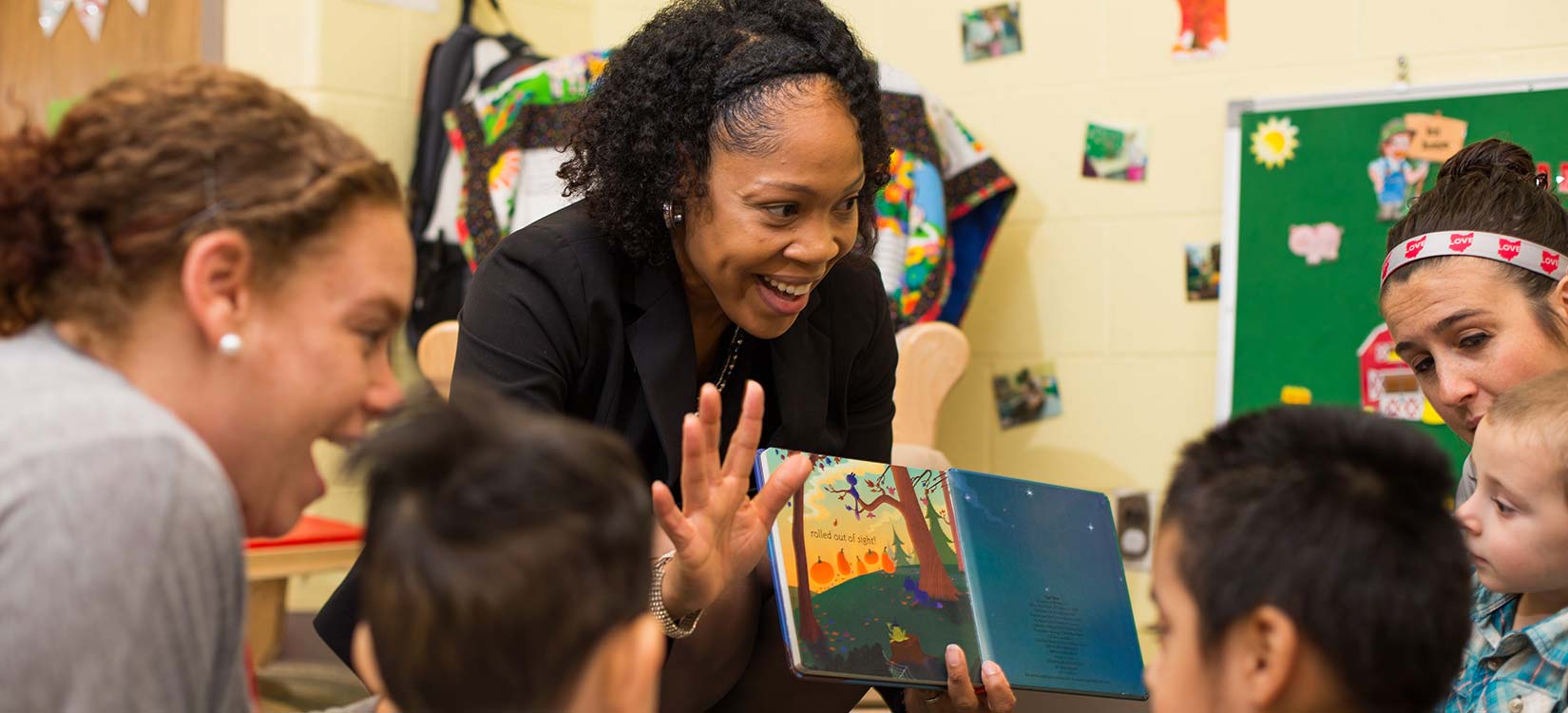Early-education program reaches developmentally disabled children at critical time

Learning starts at birth, says Anjanette Owens, ME, a veteran educator and program manager for the Nisonger Center Early Childhood Education Program.
"What infants and children hear and see affects how they communicate across the continuum of their life," she says. This is especially true for the young students of the center's Early Childhood Education Program, which serves children with developmental disabilities who are between 12 months and 5 years old. There is a window of opportunity to teach children the learning and social skills they need in life. When that opportunity is missed, Owens says, it can make a challenging life even more difficult.
In the 1980s, the Nisonger Center was heavily involved in conducting research in educational inclusion and effective peer-model programming in Early Intervention and Early Childhood Education. Early childhood education for students with developmental disabilities was at that time, and remains today, a core part of the center's mission. In addition to the center's early intervention design, its placement of peer models in its early-childhood classrooms provides an invaluable and natural learning environment for all students.
From offsetting behavior problems to promoting overall child well-being, the program teaches both children and parents skills that are transferrable to the home and school environment. An interdisciplinary team consisting of early intervention specialists, a physical therapist, an occupational therapist, and a speech and language pathologist works collaboratively in the classrooms to provide developmentally appropriate educational programming.
Applied research continues to be an important part of the program, which is one of the most respected academic-based early-childhood education programs in the country. Participating children and families benefit from applied research conducted by an interdisciplinary team of faculty and staff who specialize in identifying the needs of children and addressing those needs by applying published, peer-reviewed research.
The demand for the program continues to grow. The Centers for Disease Control and Prevention reports that the prevalence of developmental disabilities increased 17.1 percent from 1997 to 2008, affecting more than 1 million children.

